The International Study Tour will provide an introduction to the history of Urbanism and Architecture of the capital city of Cuba, listed as a UNESCO’s World Heritage Site in 1982. The expert guide will be Professor Julio Cesar Perez Hernandez, a practicing Cuban Architect, Urban planner and Urban Designer, Professor and a published author who designed and built private homes in the US and Cuba and is the author of “A Master Plan for XXI Century Havana”, a comprehensive urban plan for the future development of the capital of Cuba that aspires to the preservation of the heritage and to the creation of new urban and economic values, registered at the Library of Congress in Washington DC, as well as several international urban projects such as the one for the Historic Center of Aranjuez in Spain.
Professor Julio Cesar Perez Hernandez has taught and lectured widely in the US, Canada and Europe and has been a speaker at several INTBAU and C.E.U. international conferences across Europe. A Loeb Fellow at Harvard Graduate School of Design (2001-2002) where he was selected the 2012-2013 Wilbur Marvin Visiting Scholar, he was Visiting Professor at the School of Architecture of the University of Notre Dame in 2012 and at the Federico II University in Naples, Italy in 2011.
Taking place after the study tour will be an International Charrette on Urban Design. For more information click here.
DAY 0. Arrival and Accommodation
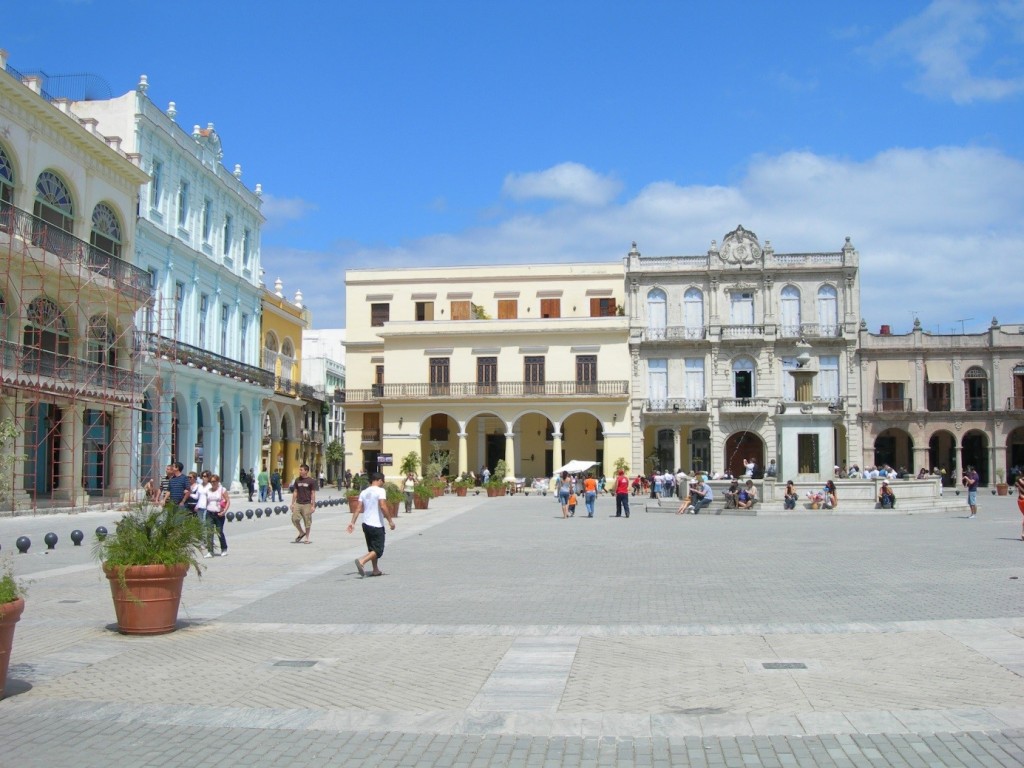
Plaza Vieja, Old Havana
DAY 1. Morning. Old Havana Walking Tour. Sunday, 6 March 2016. 9.30-12.30 am
Meeting point: Plaza de Armas, Old Havana, by the statue of Cespedes. 9.30 am.
Led by Professor Julio Cesar Perez Hernandez
Learn about the foundation and birth of the city of Havana, its public space and most important buildings within a wide range of styles.
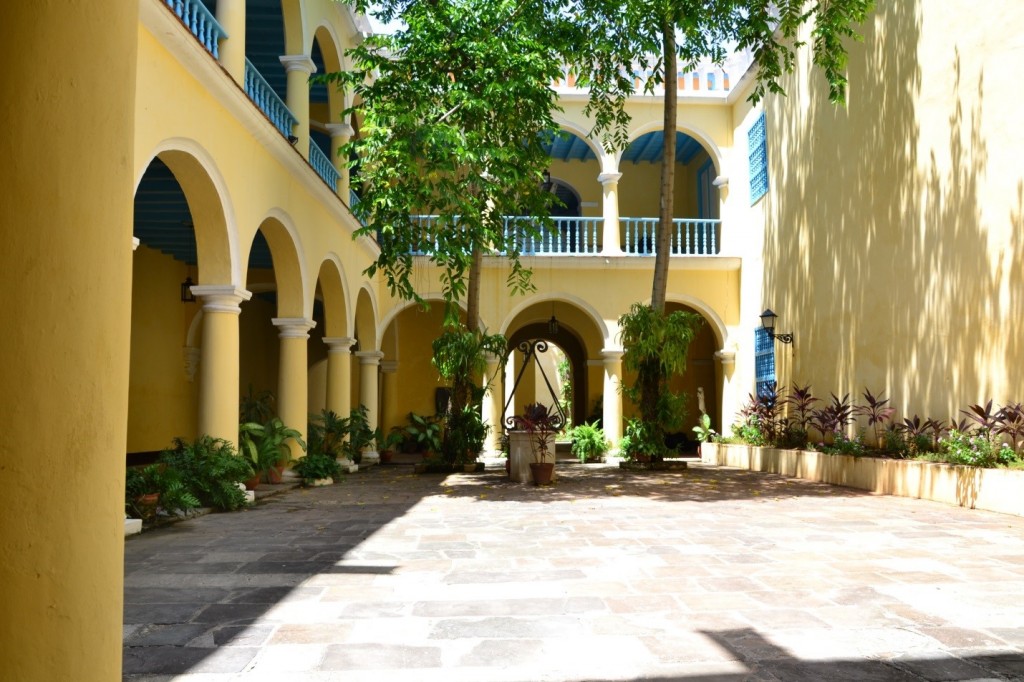
Courtyard of Casa de la Obrapia, ca. 1665, Old Havana
Visit the 4 oldest squares of the city and the most representative buildings around them:
– Plaza de Armas, XVI century with Royal Force Castle by Sánchez and Calona (1558-1577), the Palacio del Segundo Cabo or Royal Post Office (1770-1791), the Palacio de los Capitanes Generales (1776-1791) by Antonio Fernández Trevejos and Pedro de Medina; the beautiful Santa Isabel hotel —where US President James Carter stayed when he visited Cuba in 2002— the former residence of Count of Santovenia from 1784 and the Neoclassical style El Templete, from 1828, by Spanish Colonel Engineer Antonio Maria de la Torre, with its symbolic Ceiba tree
– Plaza de San Francisco de Asís from 1628, with the baroque Church and Convent of Saint Francis of Assisi from 1735; and the 1908 Stock Exchange by Tomás Mur. See from the square the Custom House by US firm Barclay, Parsons and Klapp from 1914, along the Bay of Havana.
– Walk across Plaza Vieja, where the restoration process is best witnessed. Visit the 1735 Casa de Condes de Jaruco, with the most beautiful stained glass windows in Havana and with its central inner courtyard surrounded by beautiful arcades and its original colorful friezes.
– Walk across Plaza de la Catedral and sense its intimate scale. Visit the Casa de Condes de Bayona from 1725 —currently the Museum of Colonial Art of Cuba— and the Casa del Marqués de Arcos, Casa del Conde de Lombillo and Casa del Marqués de Aguas Claras, all from the 18th Century; and the Cathedral of Havana, the greatest example of Cuban Baroque style, from 1777.
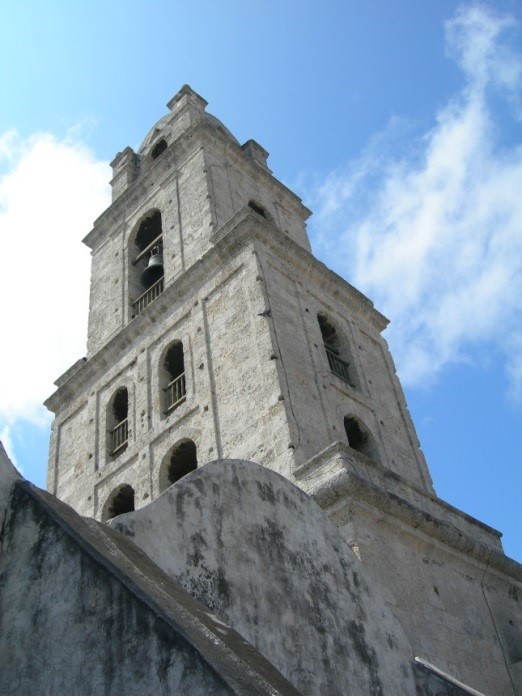
Church and Convent of Saint Francis of Assisi, 1735
Lunch at Café del Oriente, Plaza de San Francisco de Asis. Payed by each individual.
Lunch suggestion: 1.00- 2.30 pm. Café del Oriente at Plaza San Francisco.
Afternoon Free: on your own/rest/beach/museums, artist studios.
Evening: Free. Suggestions: Floridita Bar and Restaurant, Bodeguita del Medio, La Zorra y El Cuervo for Live Jazz Club on La Rampa, Nightclub at the Hotel Nacional, etc.
DAY 2. The Walls District Walking Tour. Monday, 7 March 2016 (19th – 20th Century)
Meeting point at Parque Central by the statue of Jose Marti. 9.30-12.30 am
Led by Professor Julio Cesar Perez Hernandez
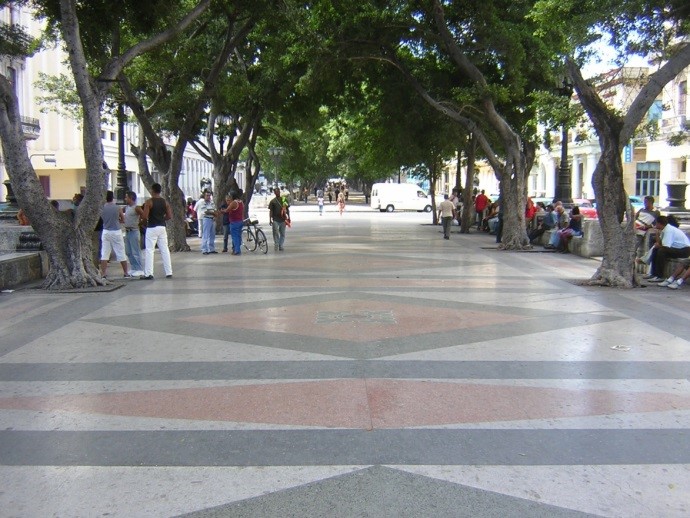
The world famous Paseo del Prado, 1929. JCN Forestier and Raoul Otero et al
Learn about the expansion of the city off the walls after they were torn down in 1863 and visit the buildings whose print and scale transformed the image of Havana forever. And learn also about the importance of the 1865 Ordinances that granted Havana its urban consistency.
– Depart from the Parque Central, once the very heart of Havana, redesigned in 1904 by Cuban architect Eugenio Batista and see across from it the historical 1879 England hotel and the 1915 Great Theater of Havana —former Centro Asturiano— by Belgian architect Paul Belau (who also designed the former Presidential Palace in 1920, currently the Museum of the Revolution) and across the park the 1925 Centro Asturiano, designed by Spanish Architect Manuel del Busto —currently the Fine Arts Museum.
– Walk across the Capitolio gardens by landscape designer J.C. N. Forestier and admire the Capitol of Havana under its final restoration —to see the National Parliament —and also Forestier’s nearby Park of Fraternity and the 1927 Cuban Telephone Company by Cuban architect Leonardo Morales as well as the famous Partagas cigar factory, showing a great example of mixed-use and how a non-pollutant industry could be part of a residential block.
– Walk along the world famous 1929 promenade El Paseo del Prado —inspired in the elevated plaza concept and considered one of the best open spaces in the world— by French landscape designer J.C. N. Forestier who also designed the Avenida del Puerto (Harbor Avenue) and the Presidential Palace Plaza.
– Visit the 1914 Casino Español by Catalonian architect Eugenio Dediot and the across the street Neo-Moorish 1908 Seville Hotel with an interesting extension by US firm Schulz and Weaver whose roof garden affords panoramic views of Havana and served as inspiration for the architect’s Biltmore Hotel in Miami.
– Visit the former Bacardi Headquarters Building from 1930 (the Jewel of Art Déco in Cuba).
Lunch suggestion at the American Club, across Paseo del Prado. Payed by each individual.
Afternoon Free: on your own/rest/beach/museums, artist studios.
Evening: Free. Suggestions: Floridita Bar and Restaurant, Bodeguita del Medio, La Zorra y El Cuervo for Live Jazz Club on La Rampa, Nightclub at the Hotel Nacional, etc.
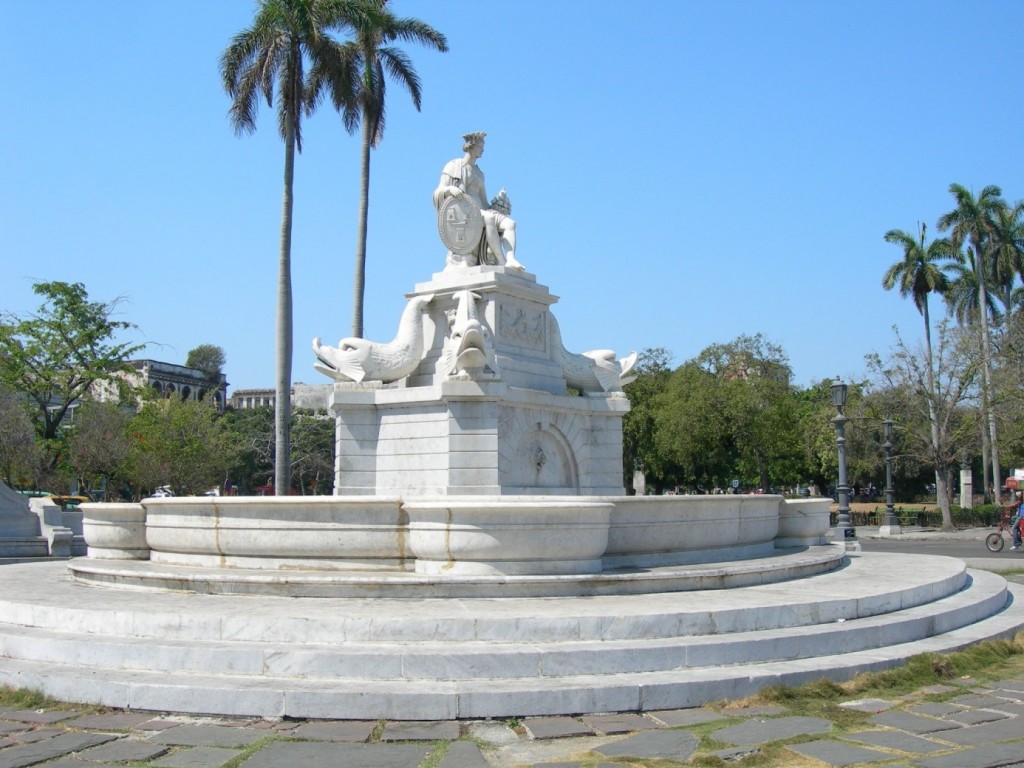
One of the symbols of Havana, The Fountain of the Indian, or the Noble Havana, 1835
DAY 3. Morning. El Vedado District Walking Tour. Tuesday, 8 March 2016
Meeting point: University of Havana staircase by the Alma Mater statue. 9.30-12.30 am
Led by Professor Julio Cesar Perez Hernandez
– Visit the Garden City of El Vedado, laid out by Spanish Engineer Luis Yboleon in 1859-60 according to modern planning concepts that is still considered the most important urban initiative since colonial times that introduced the green in the city for the first time with tree-lined avenues and parterres, and provided a very effective model for separating the private and the public realm with a setback. El Vedado district was based upon a perfect grid rotated 45 degrees to the North —to better catch the prevailing breezes and avoid the sun— marked the birth of modern planning in Cuba together with The Walls district (1865).
– Visit the 1906-40 University of Havana, and the Napoleon´s Museum, a Florentine style villa designed by Cuban architects Govantes and Cabarrocas. Visit the world famous Coppelia Ice Cream Parlor designed by late Cuban architect Mario Girona in 1966. See the 1950s hotels -such as the former Hilton Hotel designed by California architectural firm Welton Becket & Associates in 1958 and see Art Déco and Streamline Moderne style apartments influenced by South Beach in Miami, and modern cinemas like the 1947 Radiocentro building designed by Junco, Gaston and Dominguez.
– Walk along La Rampa and see numerous mixed-use buildings such as night clubs, restaurants and shops with housing on their upper storeys, as well as taller office buildings in the area, such as the Award winning 1953 Odontological Building and the 1958 Ministry of Public Health, both designed by late Cuban architect Antonio Quintana Simonetti. See the 1956 FOCSA building designed by Ernesto Gomez Sampera and Martin Dominguez, considered the best reinforced concrete apartment building in the Americas in the 1950s and learn about its negative urban impact.
– Visit the Eclectic style 1930 National Hotel, designed by US architects McKim, Mead & White,with its cozy lobby and wonderful veranda and gardens overlooking the sea.
Lunch suggestion at Hotel Nacional. Paid by each individual.
Afternoon Free: on your own/rest/visit museums, artist studios, etc.
Dinner suggestion: La Torre restaurant on FOCSA building
Evening: Free. Suggestions: La Zorra y El Cuervo for Live Jazz Club on La Rampa, Buena Vista Social Club performance at the Hotel Nacional nightclub.
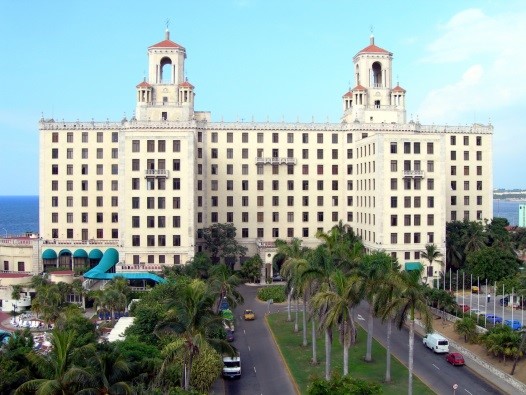
National Hotel, 1930, McKim, Mead & White
DAY 4. Morning Bus and Walking Tour of El Vedado. Wednesday, 9 March 2016
Meeting point: Hotel Habana Libre. 9.30-12.30 am
Led by Professor Julio Cesar Perez Hernandez
From the bus, see the 1953 US Embassy in Havana by Harrison and Abramowitz, the designers of the UN Headquarters in Manhattan. Visit the iconic Riviera Hotel on the waterfront, a 1957 building financed by mobster Meyer Lanski whose first design was commissioned to New York architect Philip Johnson.
Drive along the tree-lined Paseo Street to the appealing and unique 1926 Casa de la Amistad, former Baro-Lasa mansion, designed by Cuban firm Govantes and Cabarrocas with Art Déco interiors and exquisite glass works by French designer René Lalique, his only design in Latin America.
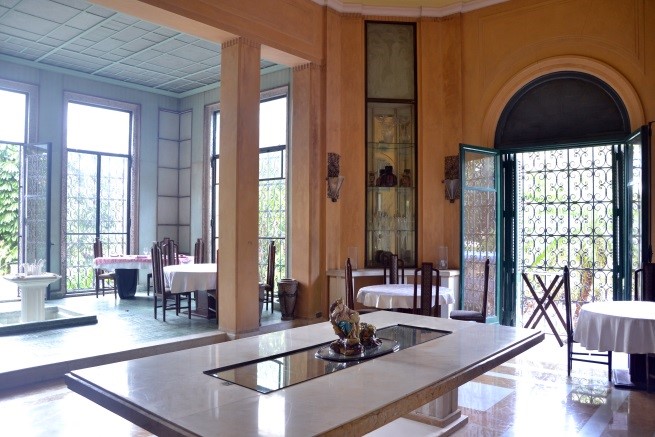
Baro-Lasa mansion, 1926. Govantes & Cabarrocas
Visit the 1927 French Renaissance style former mansion of the Countess of Revilla Camargo designed by French architects Viard and Destugue, currently the Museum of Decorative Arts.
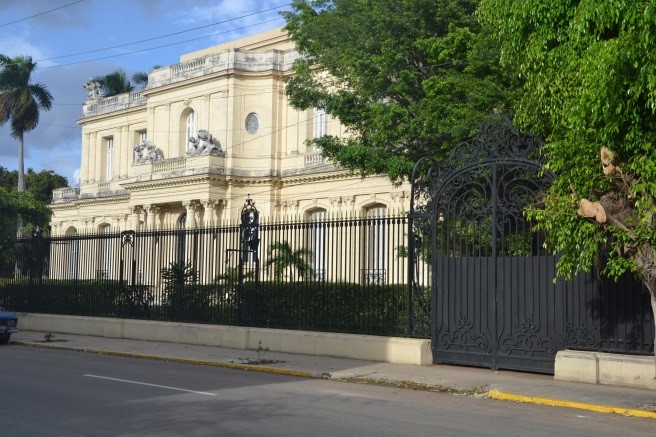
Revilla de Camargo house, 1927. Viard & Destugues
Visit the Plaza de la Revolucion, former Civic Square, an unfinished project from 1958 where a white marble monument to our National hero Jose Marti stands with other landmarks such as the 1953 former Office of the Comptroller that shows the big metal sculpture of Che Guevara, the 1957 National Library designed by Cuban firm Govantes and Cabarrocas, the 1958 National Theater by Arroyo and Menendez, and other significant buildings.
DAY 5. Morning &Afternoon Miramar Bus and Walking Tour. Thursday, 10 March 2016
West Havana & Miramar. Meeting point: Hotel Habana Libre. 9.30-12.30 am
Led by Professor Julio Cesar Perez Hernandez
The US influence in both Havana’s urbanism and architecture is best witnessed in Miramar where there are very good examples of the City Beautiful Modern Movement (Frederick Law Olmstead’s influence) and the International Style.
Morning. 9.30 am-12.30 pm. From the bus, see the 1949 Bauhaus-like house of Max Borges Jr. and Art Déco buildings, California mission style residences, modern apartment buildings and former private clubs. From the bus see the westernmost suburbs within their loose layout grid, with isolated villas located in ample lots with huge gardens with lush vegetation and beautiful eclectic mansions and the sleek design of the modern houses that inform the neighborhood.
Visit the scale model of Havana. Learn about the negative impact in Havana’s urban fabric of the Miramar Trade Center Office Park and the new hotels area where the 1980 Soviet Embassy -tallest building in Miramar- overwhelms the district with its imposing presence. Visit the Miramar Trade Center.
Lunch at Paladar Vistamar, 12.30-1.45 pm. A private restaurant. The former house of Cuban architect Miguel Gaston by the water includes an infinity pool overlooked from the dining area.
Afternoon: 2.00-3.00 pm. Visit the famous De Schulthess residence designed by Richard Neutra with gardens by Brazilian landscape designer Roberto Burle-Marx in 1956. The De Schulthess residence is Neutra’s only work in Cuba and also Burle-Marx’s design.
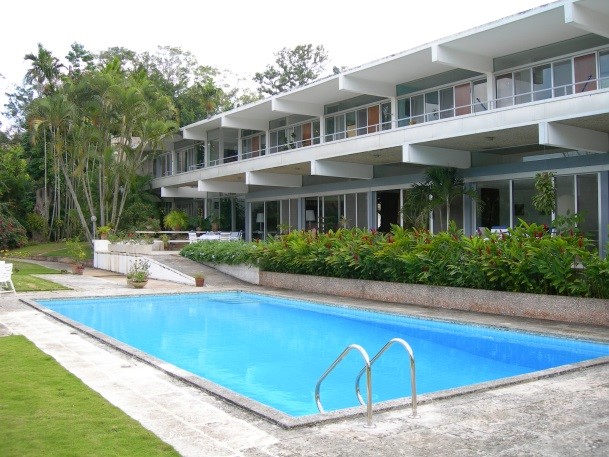
The Schulthess House, 1956. R. Neutra with Cuban architects R. Alvarez and H. Gutierrez. Gardens by Burle-Marx
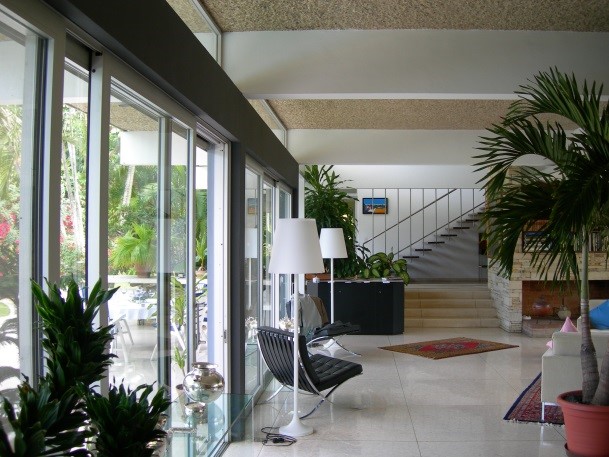
The Schulthess House, 1956. R. Neutra with Cuban architects R. Alvarez and H. Gutierrez. Gardens by Burle-Marx
3.15-4.30 pm. Visit the Plastic Arts School of the famous Schools of Art of Havana. The Plastic Arts School was designed by late Cuban architect Ricardo Porro, who also designed the School of Modern Dance. Talk to students and artists who work there.
The campus of the famous Schools of Art of Havana was built between 1961 and 1965 in the exclusive area of the former Golf Course of the Country Club of Havana, now known as Cubanacan, by Cuban architect Porro and Italian architects Vittorio Garatti (Ballet and Music School) and Roberto Gottardi (School of Drama).
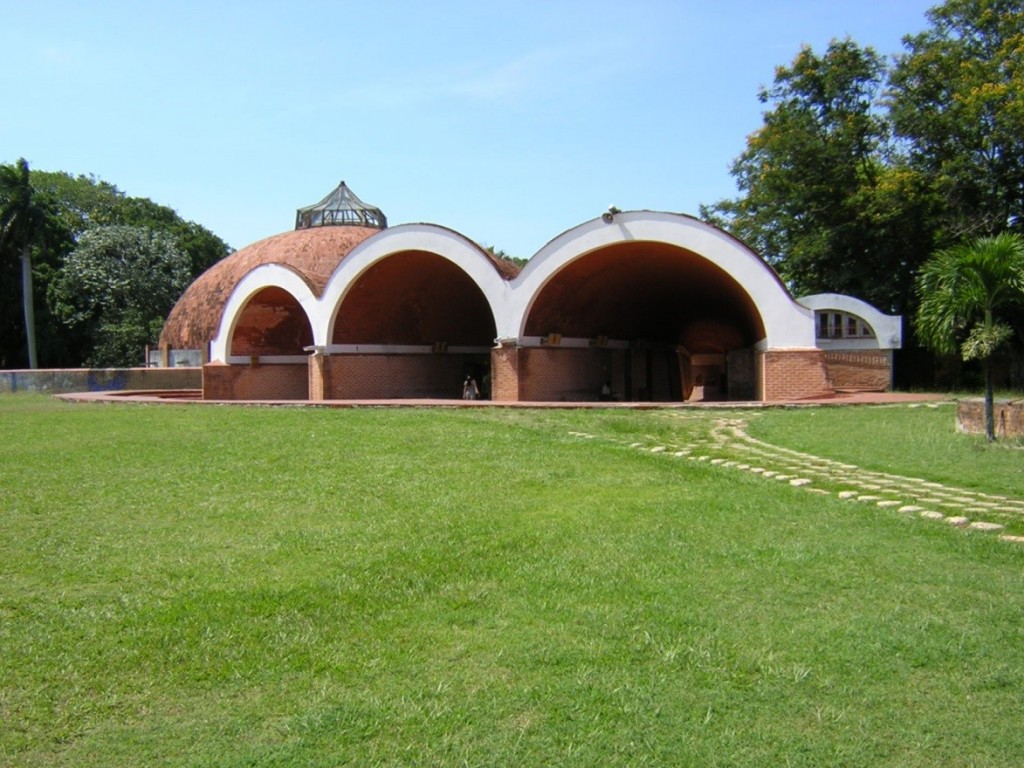
School of Plastic Arts, 1961-1964. Ricardo Porro
DAY 6. Return home or day on your own. Visit historic places as Finca Vigia, the former Hemingway’s state in the outskirts of Havana, or the harbor market, or museums.
Important Information
Registration Fees= $675.00 USD per person
Registration Fees DO NOT include transportation, meals and neither admission fees to museums, theaters, etc.
Contacts for registration and information:
Julio Cesar Perez, INTBAU Cuba email: jcaesar2010@gmail.com
For those who travel to Havana for the tour only:
You should book your own airfare.
Recommended arrival dates in Havana: Friday 4th March, Sunday 5th March
Recommended departure dates: Saturday 12th March or later.
Participants should arrange their own travel to Havana. Airlines with connections from Europe include Air France, KLM, British Airways, Iberia, and Virgin Atlantic (from London).
From the US, as per 6 September 2015, there are direct charter flights. This may change by 2016 as it’s been announced that some major airlines such as American Airlines and Jet Blue are negotiating with both the US and the Cuban Government. There are also flights to Havana from the US (Miami, New York), Canada, Mexico and other Latin American countries.
Accommodation
You should book your own hotel or Casa Particular (private home). Casa Particular is a uniquely Cuban form of accommodation, very much in demand, where you can rent a room for 40 CUC per room per night (as per 6 September 2015, this may vary); rooms for rent in private houses and apartments. Most of the rooms are in apartment buildings from the 1950s, and all are located in the El Vedado area of Havana, just a few blocks from the Malecon waterfront and the famous Hotel Nacional. The living and dining rooms are shared with the Cuban family. If you wish, the family will provide you with breakfast and other meals (5 extra CUC as per 6 September 2015). All guests will have single rooms unless otherwise agreed with their own bathrooms; all are equipped with air condition units. As we have collaborated with the same owners for several years, we trust them and have never had a complaint from any client.
You’ll be provided the Casa Particular’s owner email and cell phone number in order to deal directly with them, once you decide to register for the events. Additional accommodation in Casa Particular, bed & breakfasts, can be arranged for participants arriving early or staying longer.
Currency and Money Exchange
As per 6 September 2015 the major currency for Cuba is the Cuban Convertible Peso, CUC. It’s what you exchange your foreign currency for and make almost all of your purchases with in Cuba. For international exchange purposes 1.00 Cuban Convertible Peso = $1.00 US Dollar.
The second legal currency in Cuba is Cuban Peso, CUP. The exchange rate is approx. 24 CUP for 1 CUC, as per 6 September 2015. This may be subject to change due to the Cuban Government’s regulations.
Some ATMs can be found, but they are rare compared to other countries. Credit cards issued by US banks will work in Cuba, but still we advise US participants to bring cash for the trip.
Euros, UK Pounds and US Dollars are accepted in any currency exchange shop. US Dollars will be subject to a 10% tax when exchanged, as per 6 September 2015.
Visas
You will need a tourist visa to visit Cuba. Please contact your local Cuban embassy. New regulations require you to submit the name of the hotel or the address and registration number of the Casa Particular where you’ll be staying at. A Cuban tourist visa is required for US visitors to visit Cuba.
US TRAVELERS SHOULD NOT BE CONCERNED at all regarding traveling to Cuba as travel from the US to Cuba is now easier than ever. We have had US participants for all the previous professional tours and workshops in Cuba. Due to the US trade embargo, US citizens will have to travel under either a general or a specific license. For further information, please go to the website of the United States Department of the Treasury Office of Foreign Assets Control.
You may email me or contact the travel agency we usually work with and we rely on for the visas and airfare HAV-MIA-HAV or from Tampa-Hav-Tampa:
YUMA CUBA EXPRESS
Roberto Touron at: touron@att.net and yumainc@bellsouth.net
Cell Phone: 305 778 3837
Fax: 305 829 0306
We can recommend several hotels in Old Havana and El Vedado, including Hotel Nacional:http://www.hotelnacionaldecuba.com/en/home.asp
Please see the following comments by the President of the INTBAU USA Chapter, architect Michael Mehaffy:
‘You will need to make your own specific determination, but in my case I went under a “general license,” no pre-application required, under the provisions of an international professional meeting in my professional area. I brought with me: a letter of invitation from the organizers; a print of this OFAC document with relevant sections highlighted; my CV; and my itinerary, making it clear this was a professional and international event. I had no problems whatsoever, and I am not aware that anyone else from these events has either. The intent of the license is to avoid penalizing American professionals who might otherwise benefit from an international professional event in Cuba”.
Contacts for registration and information:
Julio Cesar Perez Hernandez, at: jcaesar2010@gmail.com
Cell pone: +1 574 343 6549
You can read about the Havana International Charrette on Urban Design taking place 13-19 March 2016 here.